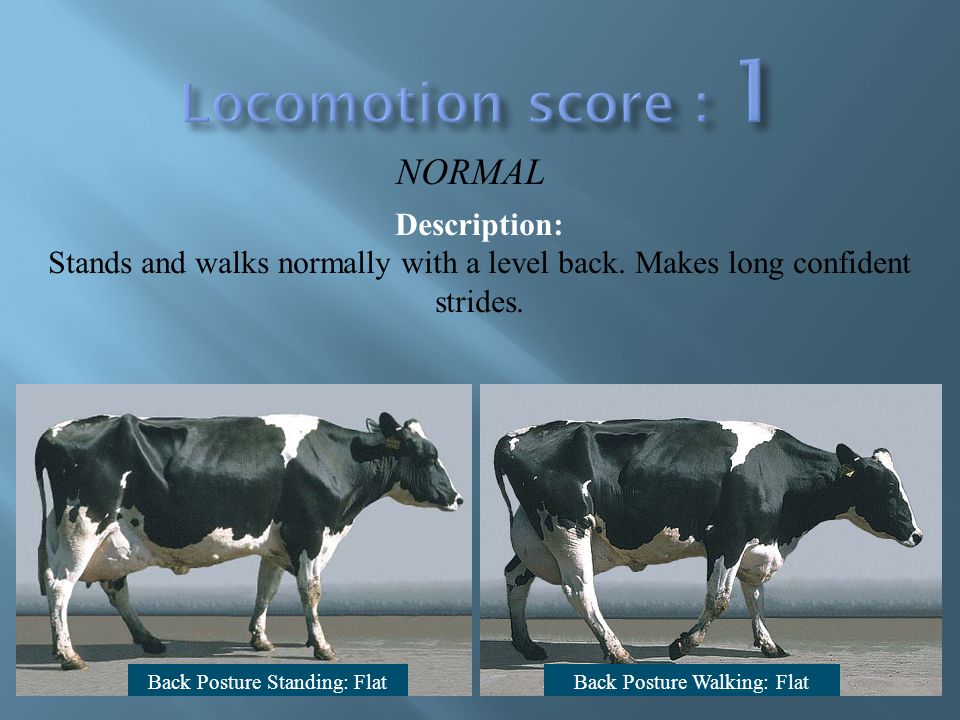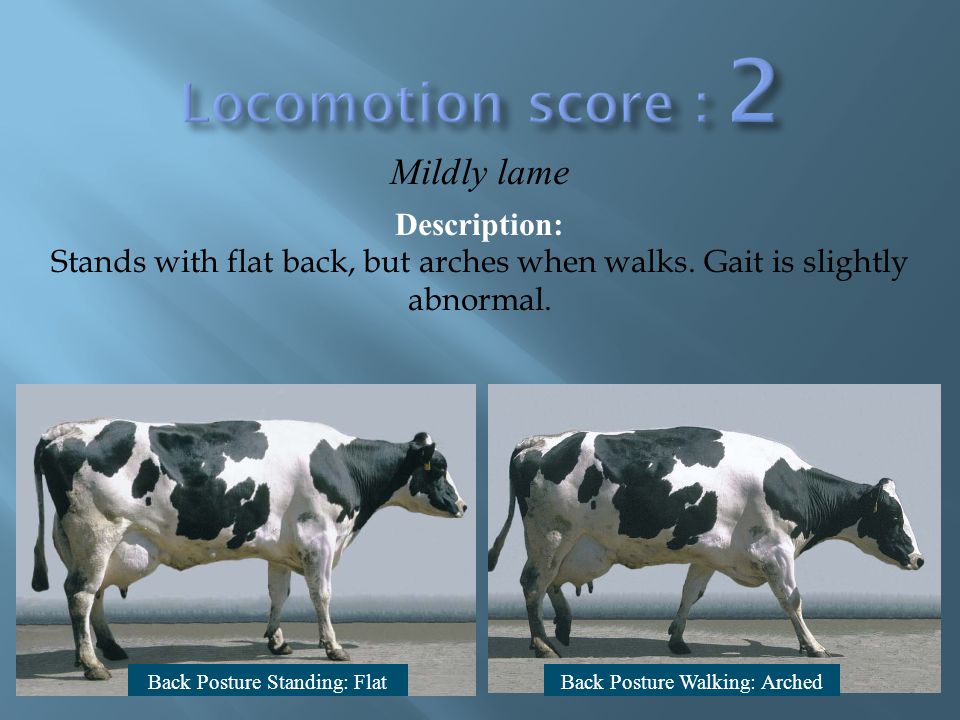Locomotion Scoring Dairy Cattle
Locomotion scoring dairy animal:
Locomotion scoring dairy animal is based on the Standing position and walking of dairy animal with special care on their back posture. This system is easy to use and implement.
Use of locomotion scoring is effective for early detection hoof disorders, lameness, comparing the incidence and severity of lameness between herds and identifying individual cows for functional hoof disorders and lameness.
Range of Scoring:
Locomotion scoring ranges from 1 to 5 , in which 1 indicate the normal animal and 5 indicates the severally lame animal.
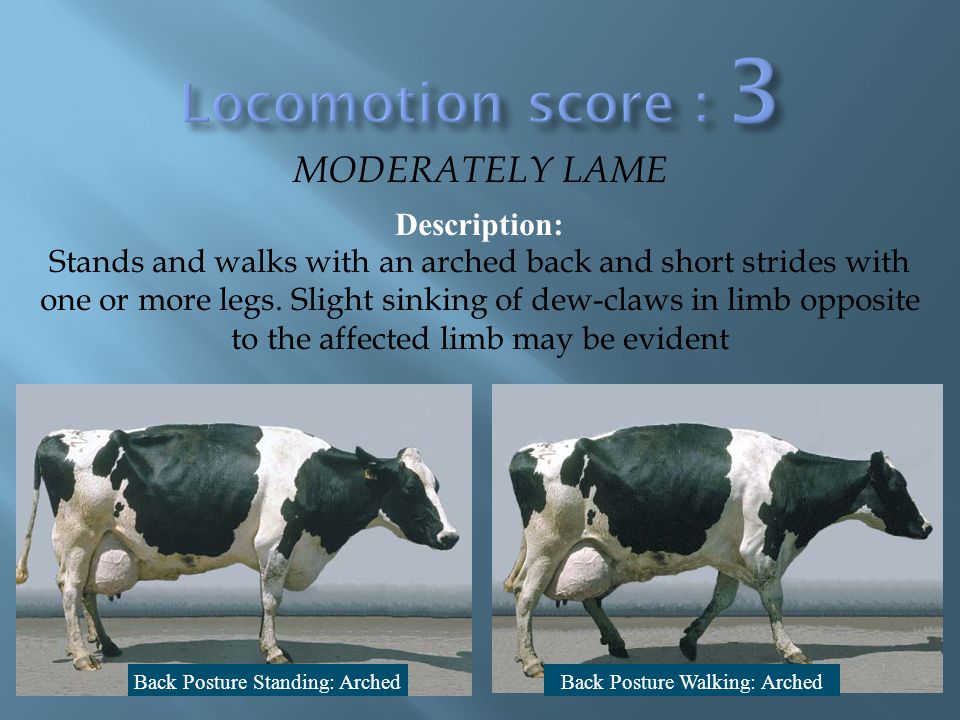
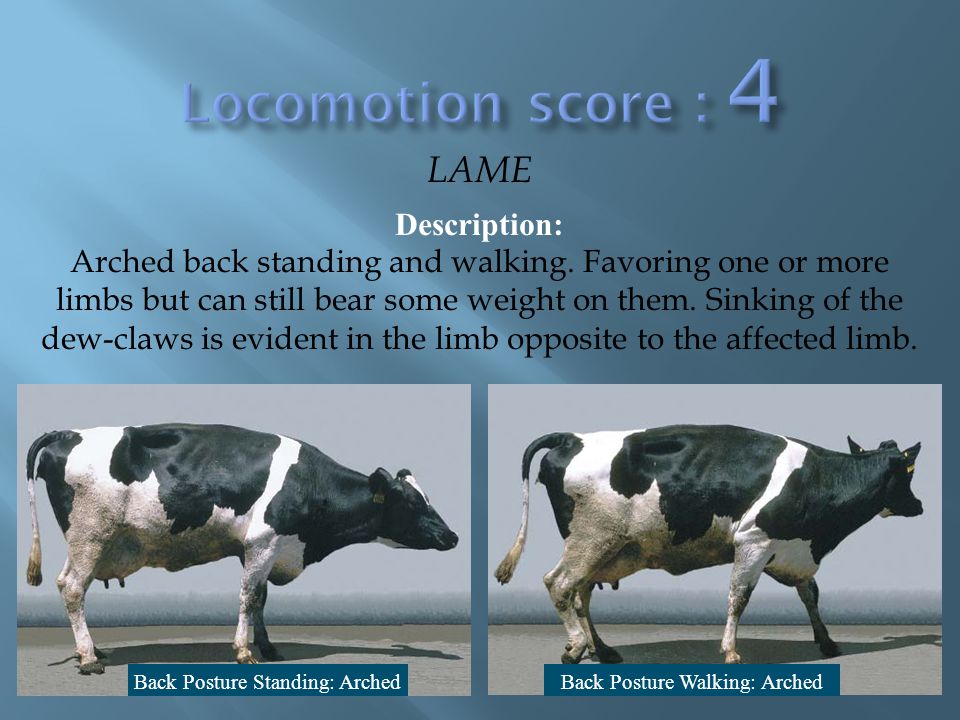
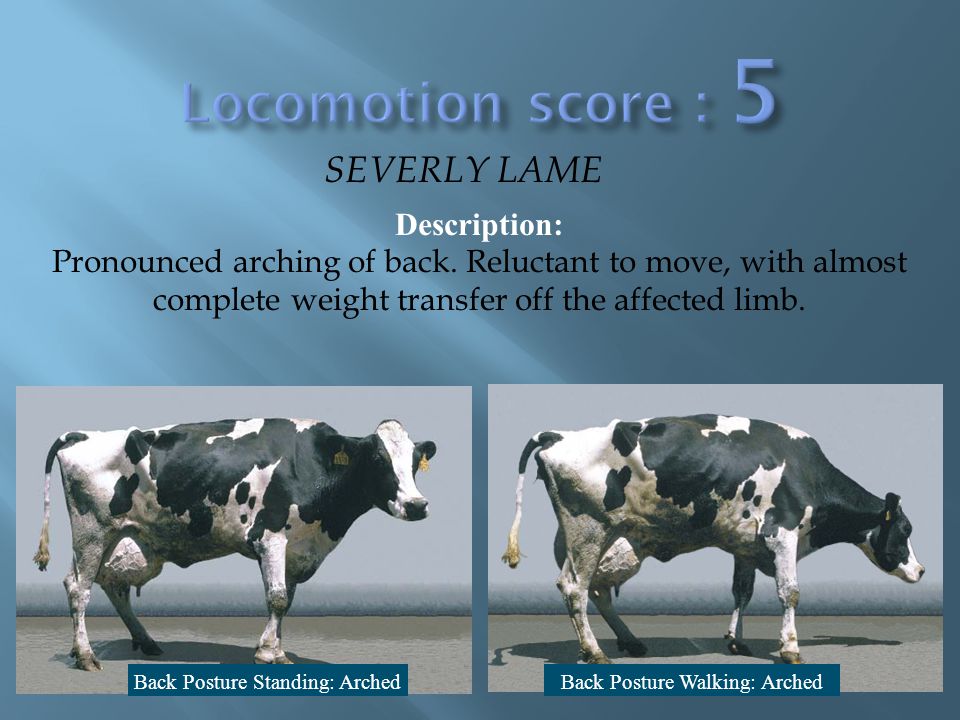
NOTE:
Animal observations should be made on a flat surface that provides good footing for cows. Cows scoring 2 or 3 should be examined and trimmed to prevent more serious problems. Trimming should be done by a competent hoof trimmer with the goal of returning the claws to functional weight bearing and conformation.
